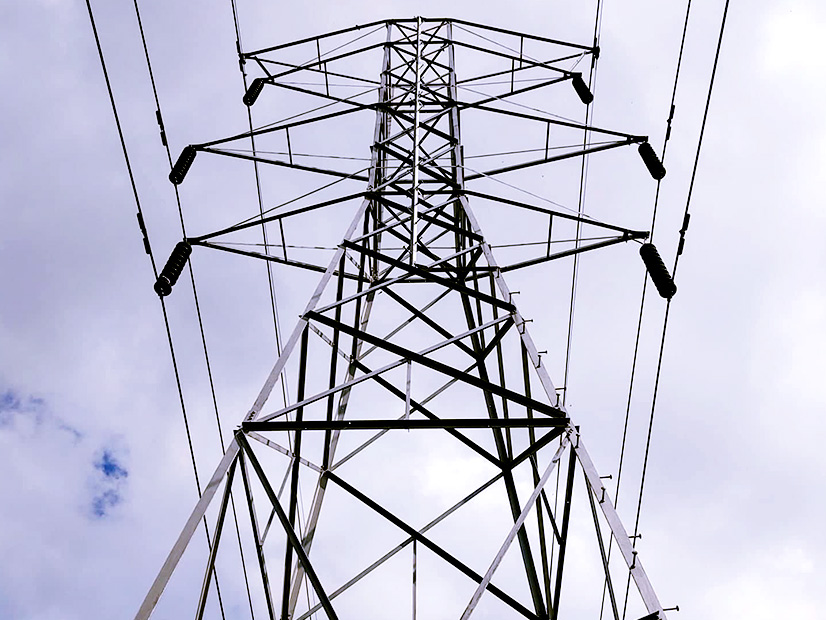Stakeholders last week urged PJM to hold its ground on proposed collateral requirements for FTR traders, saying it should offer more support for a formula FERC rejected in February.
FERC on Feb. 28 rejected PJM’s proposal to modify the FTR credit requirement with an initial margin calculation from a historical simulation (HSIM) model using a 97% confidence interval. The commission said PJM failed to support its proposal because its independent auditors validated the model at a 99% confidence interval rather than the 97% confidence interval proposed.
The commission directed PJM to make a filing within 60 days to show cause why its existing FTR credit requirement remains just and reasonable or explain what tariff changes will remedy the commission’s concerns (ER22-703). (See FERC Rejects PJM’s FTR Credit Requirement Proposal.)
In a sector-weighted vote at the March 23 Members Committee meeting, stakeholders endorsed a motion for PJM to refile the original proposal “accompanied by some new supporting rationale.” The motion received a sector-weighted vote of 3.9 out of 5 (78%).
A second motion calling for PJM to file the FTR credit requirement revisions with a confidence interval of 99% received a sector-weighted vote of 2.25 (45%). A third motion that called for instituting the 97% confidence interval, and then moving to the 99% within one year, received a sector-weighted vote of 3.01 (60%).
Dave Anders, director of stakeholder affairs for PJM, said the RTO’s technical and legal staff “values the feedback it received” and would assess the next steps in the filing process. Anders said “no firm decision” has been made by PJM on the filing, but the RTO will notify stakeholders of a decision within a week. The PJM Board of Managers have the final say on what the RTO files with the commission.
PJM Perspective
PJM’s Chief Risk Officer Nigeria Bloczynski presented the RTO’s perspective on the FTR filing, saying FERC’s order “appears to provide support” for moving to the 99% confidence interval.
The RTO filed its initial proposal with the commission in December after stakeholders endorsed it in October. (See PJM Stakeholders Endorse Initial Margining Proposal.)
The proposal resulted from a two-year stakeholder process at the Financial Risk Mitigation Senior Task Force (FRMSTF), an effort to strengthen PJM’s FTR credit and collateral rules in response to a report by independent consultants on the 2018 GreenHat Energy default. PJM said the proposal addressed one of the last recommendations in the report yet to be implemented: “eliminating the undiversified adder.”
Much of the stakeholder debate in October centered around the confidence interval, with some advocating for 95% and others for 99%, ultimately settling on 97% as a compromise. The confidence interval refers to the “statistical certainty that a given value will exceed the range of possible outcomes (i.e., the losses in portfolio value over the margin period of risk) produced by the HSIM model,” according to PJM.
In its order, the commission said it agreed with arguments made by the Organization of PJM States Inc. (OPSI) and PJM’s Independent Market Monitor that the record “fails to support” a 97% interval.
In the December filing, PJM argued that imposing a 99% confidence interval instead of 97% might “force some market participants to unwind market positions or to decide not to continue participation in the FTR auctions and FTR markets entirely.”
Bloczynski said PJM is now recommending moving toward the 99% confidence interval because using a higher confidence interval “provides more coverage of tail events” to protect PJM members and ratepayers in a default. She said the 99% confidence interval “brings PJM closer to the standards generally used in other commodity markets.”
PJM “stands behind” its original December filing, Bloczynski said, but the RTO doesn’t believe there is a “high probability of success” with a refiling that includes additional support if there continues to be protests by stakeholders against the 97% confidence interval. She said having a filing that includes a transition from 97% to 99% could have more “success” with the commission.
Stakeholder Perspectives
Steve Lieberman, vice president of transmission and regulatory affairs for American Municipal Power, presented the motion for alternatives in the PJM filing.
Lieberman argued that PJM should continue to support the 97% confidence interval in its filing and demonstrate to FERC that other changes included in the proposal “mitigate the risk of the riskiest market participants.” He said if PJM decides to move forward with the 99% confidence interval in a Section 205 filing, the process could be complicated through stakeholder protests.
“My crystal ball isn’t very clear, but I do believe we’ll see a very contentious docket at FERC, and I’m not sure that will get us the most expeditious path forward,” Lieberman said.
Jason Barker of Constellation Energy said his company was “disappointed” that PJM provided “insufficient analytical support” in its December filing to FERC on the 97% confidence interval. Barker said PJM could have done a more thorough cost-benefit analysis between the 97% and 99% confidence intervals.
“We’re disappointed that PJM doesn’t seem to express any concern for the cost of collateral,” Barker said.
Greg Poulos, executive director of the Consumer Advocates of the PJM States, said the most important part of PJM’s proposal for the advocates was to have some sort of confidence interval in place. Poulos said if PJM goes again to FERC advocating for the 97% confidence interval, it will create the “most uncertainty” on the issue and stall the adoption of other aspects of the proposal.
Market Monitor Joe Bowring said the IMM supports PJM’s position on moving to the 99% confidence interval because it allocates the costs to those that are imposing risks on the market.
Gregory Carmean, executive director of OPSI, said his organization agreed with PJM making a Section 205 filing with the 99% confidence interval. Carmean said other institutions responsible for regulating financial trading require a 99% confidence interval level.
“There’s no reason that the financial traders in PJM should be subject to less of a standard,” Carmean said.

